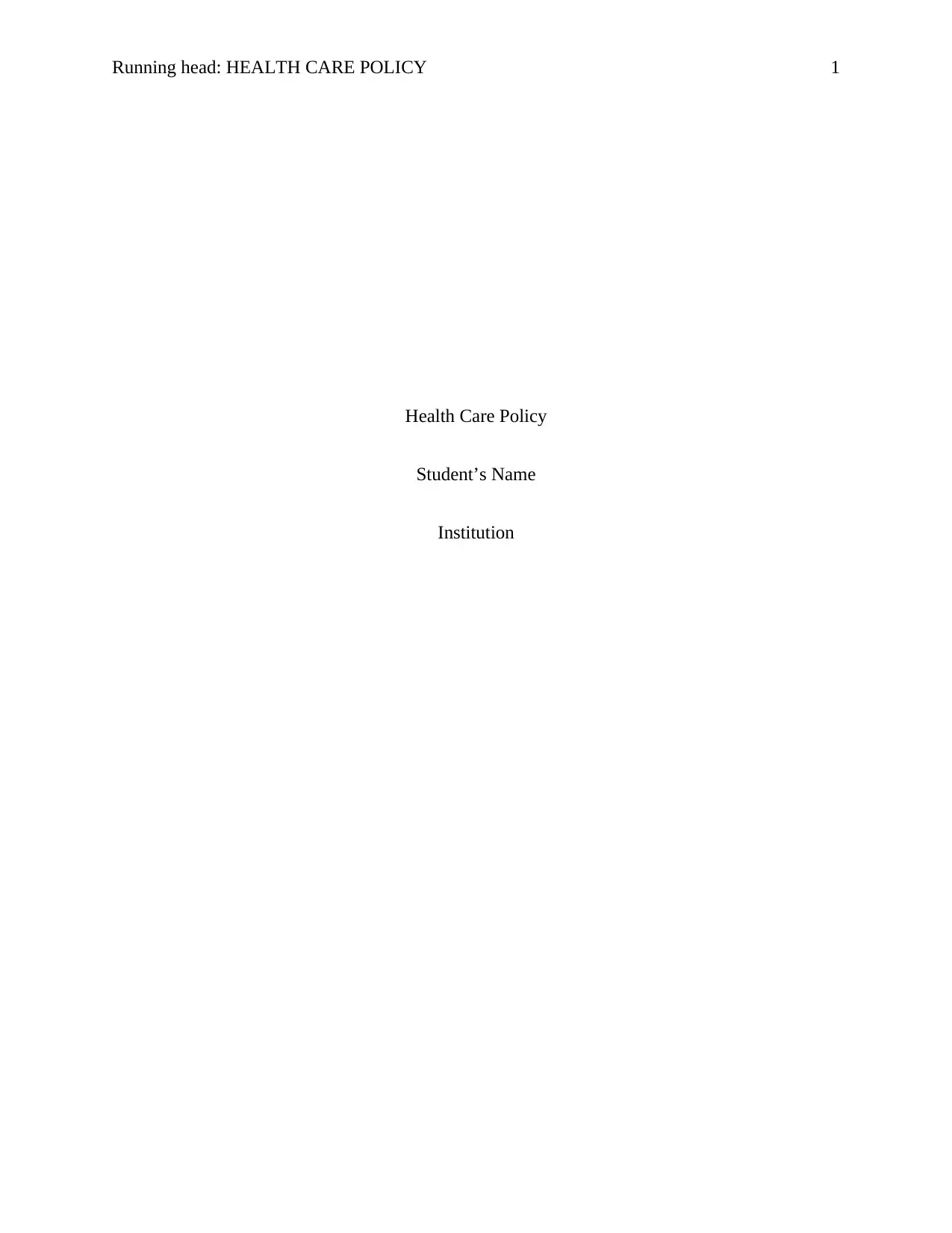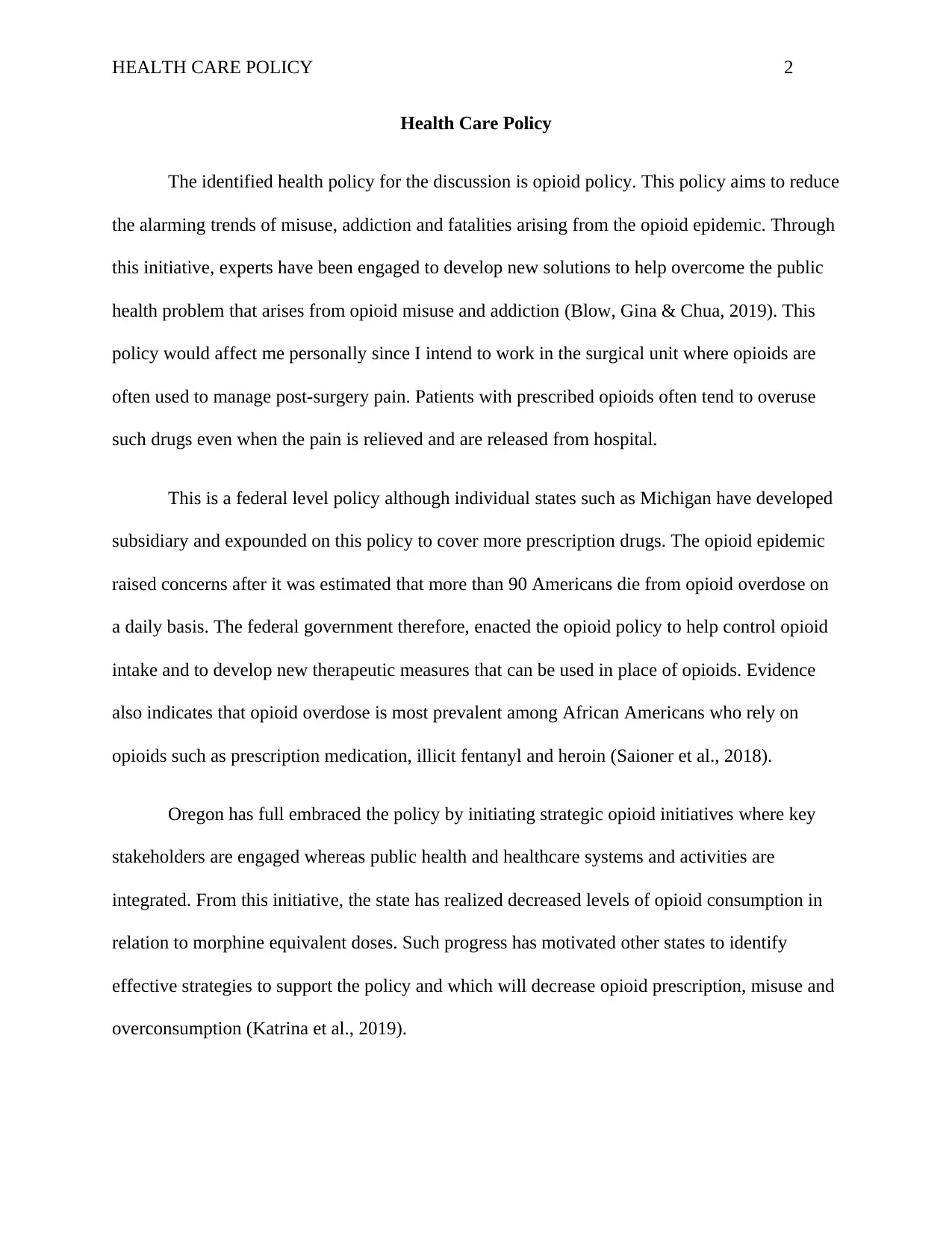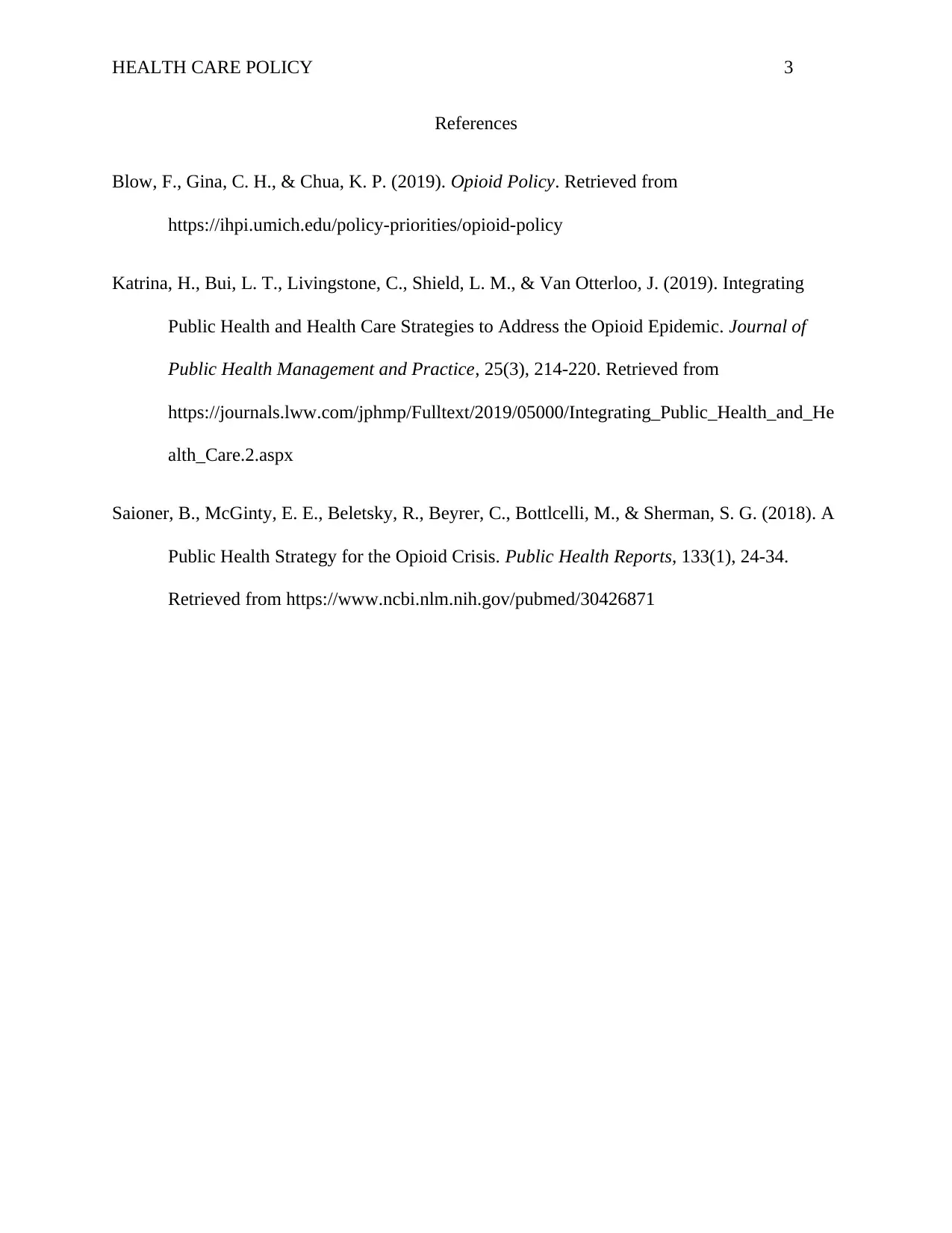Opioid Policy Analysis: A Comprehensive Healthcare Overview
VerifiedAdded on 2023/01/11
|3
|469
|46
Report
AI Summary
This report analyzes the opioid policy, focusing on its impact on healthcare, public health, and strategies for addressing the opioid epidemic. The report examines the federal policy's role in controlling opioid intake and developing alternative therapeutic measures, while also addressing the disproportionate impact on specific demographics, such as African Americans. It highlights the significance of state-level initiatives, using Oregon as a case study, and explores how these initiatives have influenced opioid consumption and prescription practices. The analysis considers the personal implications of the policy for healthcare professionals, particularly those working in surgical units where opioids are commonly used for post-operative pain management. The report concludes by emphasizing the importance of integrating public health and healthcare strategies to effectively combat the opioid crisis and reduce the associated risks of misuse and addiction.
1 out of 3










![[object Object]](/_next/static/media/star-bottom.7253800d.svg)